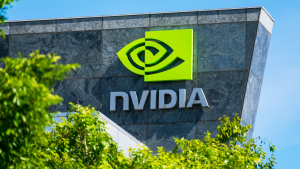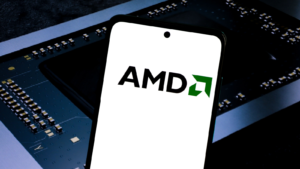With just weeks until New Year 2024, now is the time to start planning for your future. Besides the New Year Resolutions, the one thing you must do is plan for your financial future. In fact, investing in the right stocks can help generate passive income while also growing your capital. Whether you are a beginner or a pro, here are the seven stocks to buy to help kickstart the new year.
Stocks to Buy: Microsoft (MSFT)

I don’t think I’ll ever stop being bullish on Microsoft (NASDAQ:MSFT). One of the best tech companies to invest in, it’s been resilient even in the most volatile markets. Better, it just reported impressive quarterly numbers. And it just completed its acquisition of Activision Blizzard for $68 billion.
MSFT stock is trading at $360 today and is up 50% year to date. In addition, this passive income stock enjoys a dividend yield of 0.83% and has paid a quarterly dividend of $0.75. Plus, the company expects to start enjoying higher revenue from AI starting in 2024. It also just rolled out its Microsoft 365 Copilot which could be an AI game changer.
Amazon (AMZN)

E-commerce giant Amazon (NASDAQ:AMZN) is set to benefit from the upcoming holiday season. The company has shown strong growth in the recent quarter and is aggressively integrating AI into all the business segments.
Amazon started adapting AI very early in the business and has already integrated it into delivery, product recommendation, and logistics. The company is also including AI-powered search as well as a shopping assistant to make the shopping process easier for consumers.
Its Amazon Web Services (AWS) is growing at an impressive rate and saw a revenue of $23.1 billion, up 12% year over year. There is a lot more to come from Amazon, which has now become so much more than an online shopping portal.
Trading at $140 today, the stock is up 63% year to date and could be moving higher. With the holiday season and cost-cutting measures, I think Amazon will have a strong 2024.
Stocks to Buy: SoFi Technologies (SOFI)

One of the biggest reasons to invest in SoFi Technologies (NASDAQ:SOFI) is the resumption of student loan payments. This should have a big impact on the company’s business. It should also help strengthen its position in the coming years. Currently trading below $10, at $6.85, SOFI stock is cheap, and could potentially double, with patience.
Helping, SOFI just reported stellar financials and increased the number of members to 717,000. It also saw a 100% year-over-year rise in the net interest income. I also believe the worst is over for this fintech player. We will see an increase in the demand for unsecured loans and a strong demand for student loan refinancing which can help build a stronger business. SoFi may not be profitable yet. However it could report a profit in 2024, leading to further upside.
Visa (V)

Visa (NYSE:V) is making the most of the transition towards digital payments. And it’s been reporting impressive quarterly numbers. Helping, Visa could come out stronger this holiday season as consumer spending improves. Since it has minimal transaction costs, it makes money every time a user makes a payment. The stock enjoys a dividend yield of 0.86% and has paid out a quarterly dividend of $0.52.
Exchanging hands for $241, the stock is up 16% year to date and moving closer to the 52-week high of $250. Despite concerns about inflation, the company reported a 9% increase in payment volume and has a 60% operating margin which shows the strength of the business.
Stocks to Buy: Nvidia (NVDA)

Already a leader in the AI race, Nvidia (NASDAQ:NVDA) has made a lot of noise in 2023 and I believe it will continue its dominance in the coming year. While NVDA stock isn’t cheap at $469, it could continue to move upwards in the final weeks of this year.
Many investors were concerned about Nvidia’s future after Biden’s AI chip ban but the company has already found a solution for it. Nvidia will now sell a trio of chips to China that also meet U.S. regulations.
Since China accounts for 25% of the company’s total revenues, it would not like to lose the business and will begin delivering these chips in the coming days. Additionally, Nvidia has been reporting impressive revenue numbers each quarter and is making the most of the AI hype. The stock will continue to rule the market in 2024.
Advanced Micro Devices (AMD)

Nvidia’s biggest competitor, Advanced Micro Devices (NASDAQ:AMD) isn’t much behind in the AI race. The company had a tough start to the year but is finally out of the rut. AMD reported a revenue of $5.8 billion, up by 4% year over year and the adjusted earnings came in at $0.70 per share, up 4% year over year. The increase in revenue was driven by the sales of central processing units which was up 42% year over year.
AI could work as a catalyst for the company and it will start shipping MI300X chips to cloud customers in the coming weeks. The management has high hopes for AI accelerators and believes that it will help increase its market share.
Nvidia might be a leader today but AMD is very close. Trading at $113 today, the stock is undervalued and if you hold it for the long term, you can generate significant gains.
Li Auto (LI)

2024 will continue to be all about a cleaner and greener future, which Li Auto (NASDAQ:LI) is a big part of. In 2023, the company has had an exceptional year and has remained profitable for four consecutive quarters. Li Auto is performing exceptionally well compared to its peers and has had the best year so far.
It beat the revenue forecast with 105,000 deliveries in the quarter and expects to deliver between 41,700 to 42,600 cars each month.
The company reported a revenue growth of 271% to hit $4.75 billion and it is making the most of the evolving market. One good reason to invest in the stock is the high demand for Li cars. It plans to introduce the first battery EV, named Li Mega in December 2023. Trading at $37.65, this is one stock that will skyrocket in 2024 and is worth putting your money in.
On the date of publication, Vandita Jadeja did not hold (either directly or indirectly) any positions in the securities mentioned in this article. The opinions expressed in this article are those of the writer, subject to the InvestorPlace.com Publishing Guidelines.
